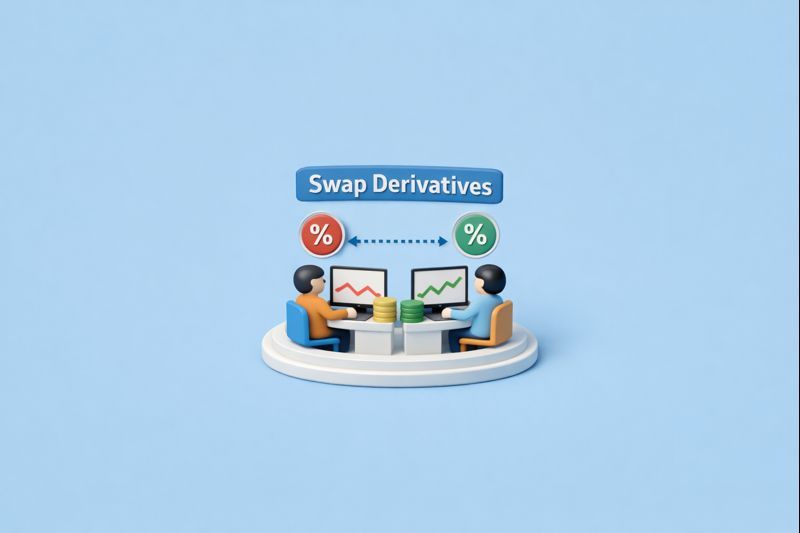- Home
- Blog
- Demat Account
- Demat Account Charges - Complete Guide
- Demat Account Charges - Complete Guide
Demat Account Charges - Complete Guide

- Published Date: December 26, 2024
- Updated Date: October 16, 2025
- By Team Choice
Investing in the stock market has become significantly easier with Demat account. These accounts eliminate the need for physical share certificates by enabling electronic storage of securities. However, managing a Demat account involves certain costs that investors must be aware of to optimise their financial strategies.
This article will provide a detailed breakdown of Demat account charges, strategies to reduce them, and the process to open a Demat account.
What is a Demat Account?
A Demat account or dematerialised account allows investors to store shares and securities electronically. It ensures seamless trading and eliminates risks associated with physical shareholding, such as theft or damage. But like any financial service, it comes with associated costs.
Breaking Down Demat Account Charges
Understanding Demat account charges is crucial for optimising your investment strategy and minimising expenses. Let’s take a look at different Demat account charges:
Demat Account Opening Charges:
Many brokers offer zero charges for opening a Demat account, but some may charge a nominal fee depending on the broker or service provider. It’s essential to verify these charges upfront when comparing different Depository Participants (DPs).
Demat Account Maintenance Charges:
Annual Maintenance Charges (AMC) are levied to maintain your Demat account. Demat account AMC charges typically range from ₹300 to ₹800 per year and may vary based on the DP and the type of account. Some brokers waive AMC for the first year as part of promotional offers.
Transaction Charges:
Transaction charges apply when securities are debited or credited from your Demat account. These fees depend on the DP and the number or value of transactions. While some DPs charge on a per-transaction basis, others have a flat monthly or annual fee structure.
Safety or Custodian Fees:
Depositories like NSDL and CDSL charge custodian fees to ensure the safety of your holdings. These are usually included in the AMC, but it’s worth confirming this with your broker.
Open a FREE Demat Account in 5 Mins.
- Free AMC for First Year
- Low DP Charges (₹ 10)
- No Auto Square Off Charges
- Free Research Calls
Other Miscellaneous Charges Associated with Demat Accounts
In addition to standard fees like account opening and maintenance charges, several ancillary costs may apply depending on the services you use and the policies of your Depository Participant (DP). Here's a detailed breakdown of common miscellaneous charges:
Dematerialisation and Rematerialisation Fees:
- Dematerialisation: Converting physical share certificates into an electronic format usually costs between ₹5 and ₹10 per certificate. Some DPs may charge up to ₹50 per request.
- Rematerialisation: For converting electronic holdings back into physical certificates, the cost is often ₹25 per certificate or ₹10 for every 100 securities, whichever is higher.
Also read: Difference between dematerialisation and rematerialization of shares
Charges for Pledging and Unpledging Securities:
- Pledging: When securities are pledged as collateral for loans or trading margins, fees typically range from 0.02% to 0.05% of the transaction value, with a minimum fee, such as ₹50.
- Unpledging: Similar fees apply when pledged securities are released.
Delivery Instruction Slip (DIS) Costs:
- Physical DIS: If you request physical slips for transferring securities, the cost is generally ₹2 per slip or ₹20 for a booklet.
Failed Transaction Penalties:
- Errors like insufficient funds or incorrect details during a transaction can result in penalties ranging from ₹10 to ₹100 per failed transaction.
Charges for Statements and Documents:
- Physical Statements: Receiving physical copies of account statements or transaction records can cost between ₹10 and ₹50 per statement.
- Email Statements: While electronic statements are generally free, some DPs may charge a small fee.
Dormant Account Reactivation Fees:
- Accounts with no activity for a prolonged period (usually 6 to 12 months) may be deemed inactive, and reactivating them could cost ₹50 to ₹200.
Account Closure Fees:
- While account closure is typically free, some DPs may charge fees, particularly if the account is closed within the first year of opening. These fees can range from ₹50 to ₹500.
Key Considerations
These charges can vary widely across different Depository Participants and are subject to change. It is always advisable to consult the latest fee schedule provided by your broker or DP to ensure you are aware of all applicable costs.
By understanding these additional fees, investors can make better financial decisions and effectively manage their Demat accounts while minimising unnecessary expenses.
Choosing Between Full-Service and Discount Brokers
Selecting the right broker is a key decision for every investor. While full-service brokers offer comprehensive support, research, and advisory services, discount brokers focus on cost-effective trading solutions.
Let’s understand the charge structure between both brokers:
Full-Service Brokers:
Full-service brokers provide a comprehensive range of services, including research reports, advisory, and personalised trading strategies. These brokers charge substantial fees, making them suitable for new investors seeking extensive support.
Discount Brokers:
Discount brokers offer basic services like executing buy and sell orders at significantly lower costs. They are ideal for cost-conscious investors or those who prefer to manage their trades independently.
Choosing the right broker depends on your investment style and the level of service you require.
Different Strategies to Reduce Demat Charges
Here are several ways you can use to reduce your Demat account charges:
Compare Brokers:
Research and compare brokers based on their fee structures. Look for brokers offering zero account opening charges, low AMC, and competitive transaction fees.
Optimise Your Trading Activity:
Minimise the number of trades to reduce transaction costs. Consider bulk trading to save on per-transaction fees.
Negotiate Fees:
Don’t hesitate to negotiate charges with your broker, especially if you are a frequent trader or long-term customer.
Choose the Right Plan:
Many brokers offer different plans based on trading frequency. Choose one that aligns with your investment pattern.
Utilise Offers:
Take advantage of promotional offers like zero AMC or discounted transaction fees for new accounts.
Key Tips While Opening a Demat Account
- Opt for a low-brokerage Demat account to save on charges in the long term.
- Ensure your DP is transparent about Demat account charges, including opening fees, annual maintenance fees, and transaction costs.
- Ask about any promotional offers like zero account opening charges or discounted brokerage plans.
Conclusion
Understanding Demat account charges is crucial for optimising your investment strategy. By staying informed about opening fees, maintenance charges, and transaction costs, you can make cost-effective decisions. Compare brokers, choose the right account, and adopt strategies to minimise charges. These steps will enhance your investment journey, ensuring better returns and financial growth.
FAQs
Does a Demat account have charges?
Yes, Demat accounts involve charges such as account opening fees, maintenance charges, transaction fees, and custodian charges.
Are there any free Demat account opening options?
Yes, many brokers offer free account openings as part of promotional offers.
Can I negotiate Demat charges?
Yes, some brokers allow negotiation on fees, especially for high-volume traders.
How can I reduce Demat account charges?
You can reduce charges by choosing a cost-effective broker, minimising trades, and taking advantage of discounts or offers.
Related Stories
How to Convert Physical Shares to Demat: Check out this guide on how to convert physical shares to Demat.
Different Types of Demat Accounts in India: Explore the blog to learn in detail about the different types of Demat accounts in India.
What Is a Basic Service Demat Account?: Check out this blog to learn what is a Basic Service Demat account, its features, and benefits in detail.
How to check NSDL Demat Account? Discover what an NSDL Demat account is along with its features and opening process.
Recommended for you

FII DII Data - Live Data

Share Market Prediction For Tomorrow

Market Prediction Today (24th December 2025)
